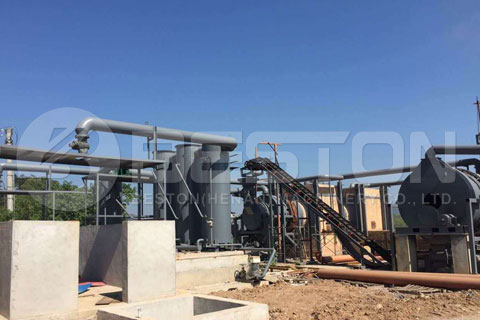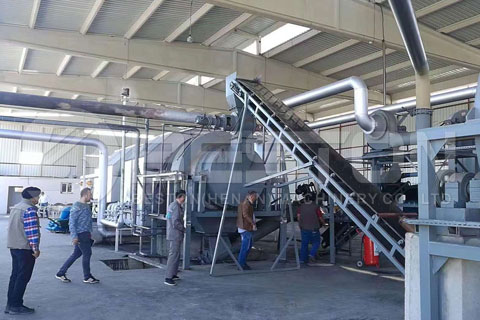The sewage sludge treatment plant (planta de tratamiento de lodos de depuradora) is to generate sewage, biogas, and purified water for agricultural use. It is expected to help reduce the burden on the already overburdened municipal sewage system. This wastewater will be used to feed livestock, generate fuel for power production, and settle septic tanks.

Although the primary function of the sewage sludge treatment plant is to treat industrial wastewater, it is also capable of treating domestic wastewater, especially if treated through a spill response mechanism. When an incident occurs at a manufacturing plant or power plant, the authorities are notified by a spill response company. The industrial sludge that is generated in such cases is transported to the nearest dumps or places where it can safely lie.
The primary process that goes on at the sewage sludge treatment plant is carbonization (maquina de pirolisis de biomasa). Carbonization is a necessary procedure in such instances because heavy rains could flood the septic tank. If heavy rains do not happen, the water would naturally settle in the bottom of the tank. As a result, heavy sediments and debris will accumulate. These materials will block the passage of sewage sludge through the septic pipes.

It is in such a situation that the sewage sludge treatment plants must take remedial action. If it is unable to clear the garbage in the tank using a common sewage sludge treatment plant (maquina para hacer carbon), then it will have to be moved to a different location where it can be handled effectively. In such a scenario, when a letter says that sewage sludge has been detected in the pond, the authorities will have to take remedial action to dispose of the garbage in an appropriate manner. The procedure involved will vary depending on the type of occurrence. In some cases, all the garbage in the pond will have to be disposed of while in others only a section of the garbage will have to be disposed of.
There are two methods of treating sewage sludge. The first method uses chemicals for carbonization, while the other uses a process called capillary water removal. In the former process, heavy sediments are manually removed using nets while in the latter process, a continuous flow of water is passed over the ground. Once the water has passed through the sediment, the residue is filtered using fine filters and the solid is decanted into another container for further treatment.
The level of importance attached to sewage sludge lies in the fact that it is a key ingredient in the treatment of industrial and commercial waste. A big portion of the sewage sludge produced by industries goes for the making of fertilizer. It is one of the cost-effective ways to produce large amounts of sodium chloride for agricultural use. In the process, huge amounts of nitrogen, potassium, phosphorus, and sulfur are created.
The reason why it has become a popular replacement for industrial sludge is that the sewage sludge treatment plants do not experience periods of low flow. It is because of this that industrial and commercial owners have started looking for ways in which they can reduce the amount of sewage sludge that they discharge into the environment. Go on reading: https://www.bestongroup.com/es/.